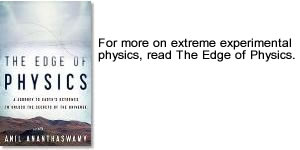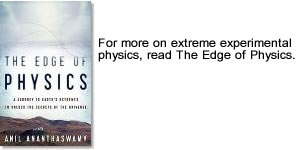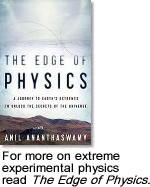Posts from — July 2010
Does every black hole harbour another universe?
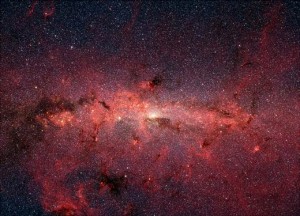
What if at the centre of every black hole exists another universe?
Could the event horizon of a black hole be the bridge to another universe?
What about the singularity that’s supposed to exist inside each black hole?
In this New Scientist story, I write about a controversial idea — based on a modification to Einstein’s equations of general relativity that use an extra geometric property of spacetime called torsion — that matter doesn’t get crushed to infinite density inside a black hole. Instead, torsion becomes a dominant property at extremely high densities and serves to repulse gravity, causing matter and spacetime to rebound. The researcher suggests that this could lead to an expanding universe inside a black hole.
What is intriguing is that this rebounding spacetime inside a black hole could create conditions that solve the horizon and flatness problems of the big bang theory. Take the flatness problem. The universe today is flat, but in order for it to be so, the curvature of spacetime would have had to be fine-tuned to ridiculous precision at the big bang, otherwise spacetime would not be flat today. Inflationary theory — the idea that our universe underwent an episode of exponential expansion just after the big bang — was devised to take care of the flatness problem.
The universe-inside-a-black-hole idea does away with the need for inflation.
What does this mean? Is there an infinite recursion of black holes inside universes inside black holes inside universes …
Hmmm…
July 26, 2023 1 Comment
PLANCK paints first all-sky CMB map
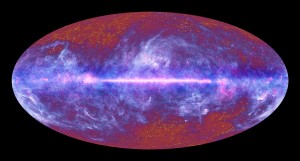
The European Space Agency has announced that its Planck satellite has completed its first all-sky survey of the universe.
The image shows the radiation from the dust in our galaxy in blue, the white hot gas is in the centre, and the mottled backdrop is the cosmic microwave background. Click here for a high-res image.
The foreground of the emissions from the galactic dust and gas will have to be subtracted to obtain the clear map of the cosmic microwave background, which is the radiation left over from the big bang, a light that is about 13.4 billion years old!
It’s Planck’s ability to gather high resolution information about the foreground emissions that will allow it to map the CMB as never before, better than NASA’s still-orbiting WMAP satellite or any other instruments that came before.
This survey took 10 months, starting in August 2009. By the time the mission ends in 2012, Planck hopes to have studied the entire sky four times over.
July 5, 2023 No Comments

